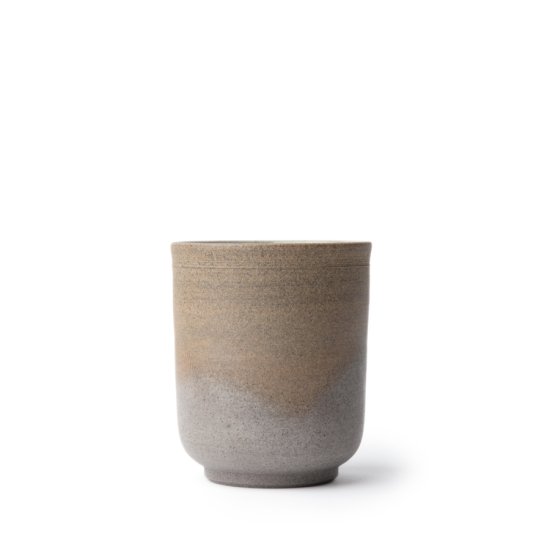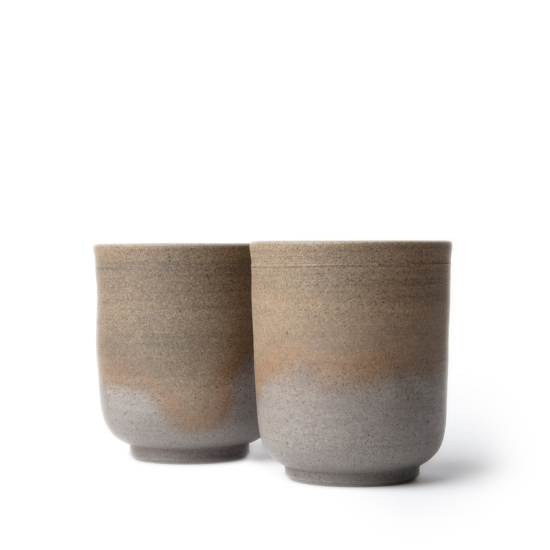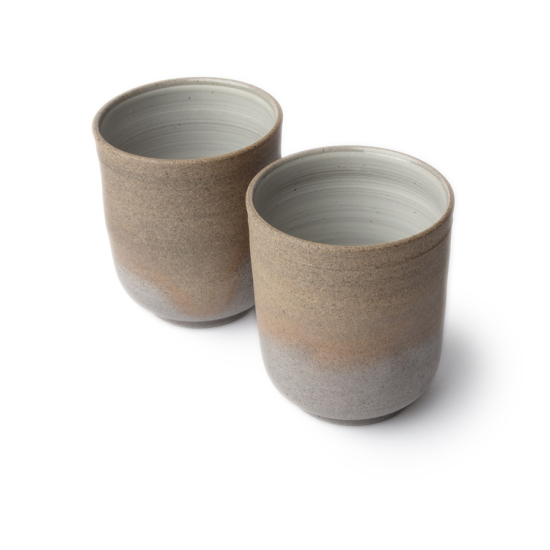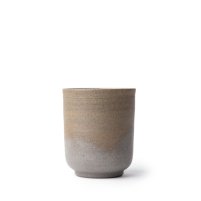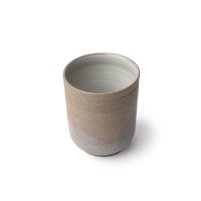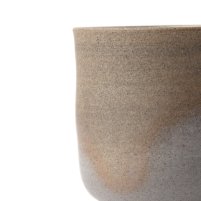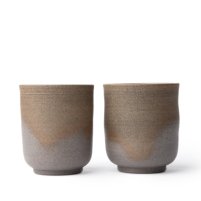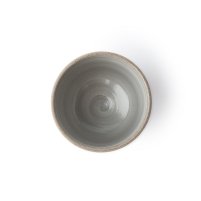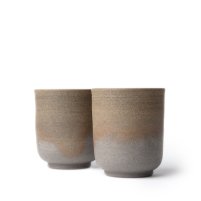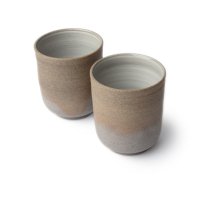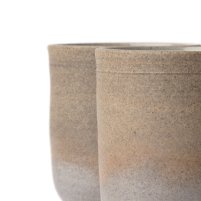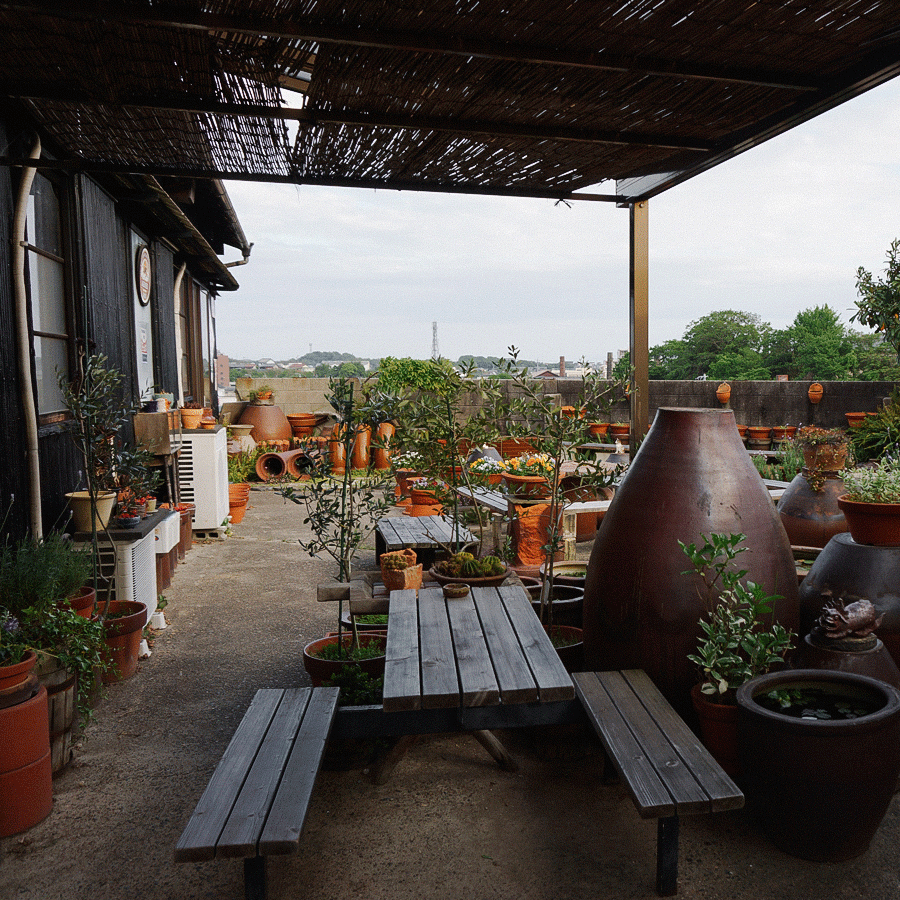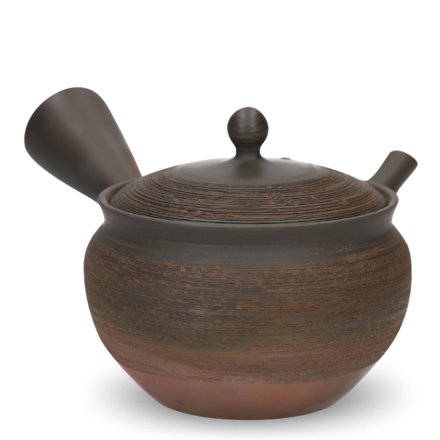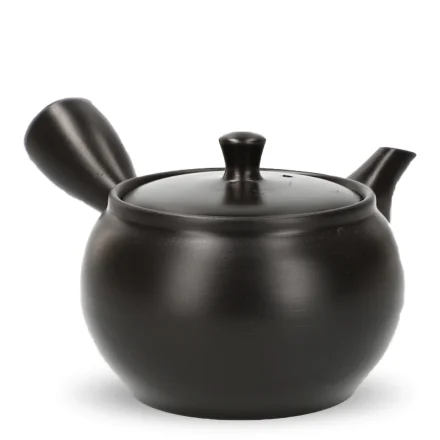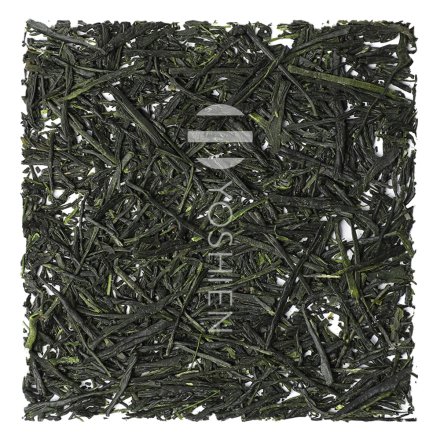Written as “kiln change”, Yōhen refers to the variations in colour and texture on the surface of ceramics that happen during the firing process. This is a feature found across various Japanese pottery styles including Tokoname, Shino, Bizen and Tenmoku. Within Tokoname-yaki, the typical two-tone Yōhen effect can be achieved by firing the ceramic item for a second time in a reduction furnace, but by partially burying it in rice husks or ashes, only the exposed part changes colour.
Teacup Pair
Yohen
Jinshu
SKU
1629
Robust Yunomi teacups with a subtle Yōhen ombré effect on the outside and elegant grey-white glaze on the inside, by the renowned Tokoname-yaki potter and certified Traditional Craftsman, Jinshu. The thick-walled, handle-free cups are particularly suited for teas brewed at higher temperatures, like Hojicha and Genmaicha.
| Product | 2x Yunomi teacups, brown |
| Origin | Tokoname, Aichi, Japan |
| Maker | Jinshu 甚秋 / Seiji Ito 伊藤 成二 |
| Volume | 175ml |
| Dimensions | Ø7.1cm x 8.5cm |
| Weight | 150g |
| Material | Ceramic |
| Finish | Unglazed (焼き締め Yakishime) outside, glazed inside |
| Decoration | Ombré (Yōhen 窯変 ) |
| Artist mark | Signature on base |
Each piece is handmade and unique, therefore colour, volume, dimensions and weight may vary slightly
In stock



